Battle Of Assandun: The Great Battle In English History And A Brief Period Of Viking Dominion In England
A. Sutherland - AncientPages.com - The Battle of Assandun was an important historical event that gave Canute the Great (Cnut Knut den Store) the Crown of England.
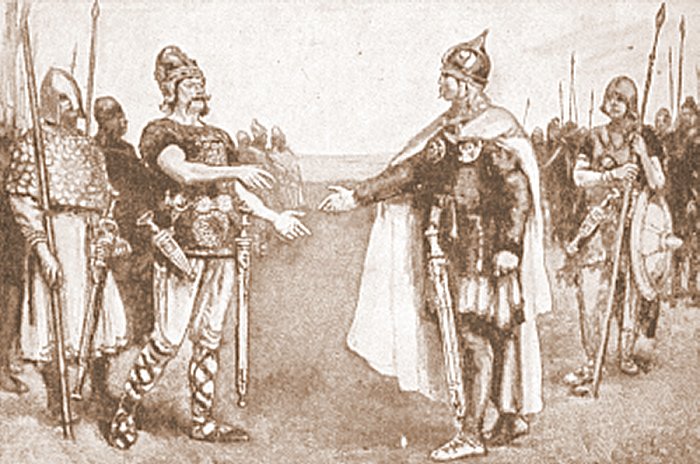 Edmund II Ironside and Canute the Great after Battle of Assandun.
Edmund II Ironside and Canute the Great after Battle of Assandun.
It took place on October 18, 1016, and was fought between Danish armies led by Canute the Great and the English army led by King Edmund II ('Ironside').
"Then he [Edmund] assembled his troops the third time, and they went to London, all north of the Thames, and looked out through Clayhanger, and he freed the populace and drove the enemy to their ships. It was within two nights after the king passed over at Brentford, where he fought the enemy and put them to flight: but there were many Englishmen who were drowned by their own carelessness; who had gone before the army to plunder…" (Anglo-Saxon Chronicle)
The battle was victorious for the Danes and helped them to retake the English territories. For many years, historians have argued in a way that unforunately does not give or have a result regarding the location of this critical battle and whether it took place.
Was Assandun – Ashdon, near Saffron Walden in north Essex, or Ashingdon near Rochford in southeast Essex, England?
After the battle, Edmund had to sign a treaty with Canute. By this treaty, all England except Wessex would be controlled by Canute. Additionally, if one of the kings should die, the other would take all of England, that king's son being the heir to the throne.
Edmund died on November 30, and Canute the Great assumed control of his territories. He was crowned King of England in January 1017.
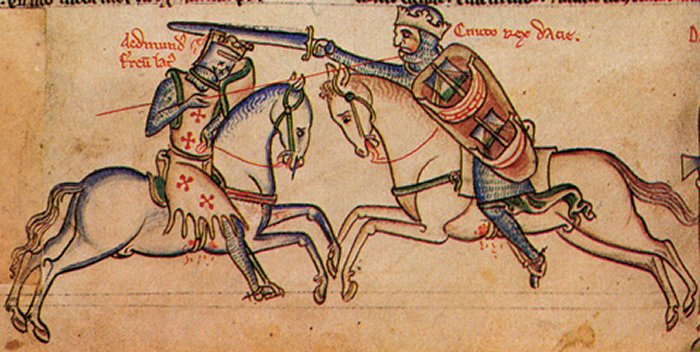 Edmund Eisenseite (left) in a duel with Knut the Great. (Representation from the Chronica Majora by Matthew Paris, around 1250). Image credit: Matthew Paris (1200–1259) - Public Domain
Edmund Eisenseite (left) in a duel with Knut the Great. (Representation from the Chronica Majora by Matthew Paris, around 1250). Image credit: Matthew Paris (1200–1259) - Public Domain
Thus for the first time, England became a single united kingdom, covering the same territory as it does today.
It also remained under Danish rule for the next 26 years.
Canute built a church, chapel, or similar holy site after winning a battle to commemorate the soldiers who died in battle.
A few years later, in 1020, the completion took the place of the memorial church known as Ashingdon Minster on the hill next to the presumed site of the battle in Ashingdon.
"King Canute ordered St Andrew's, "a church built of lime and stone for the souls of those slain in the Battle of Assandune 1016. It was dedicated in 1020 at a ceremony that King Canute and his officers attended. This battle was the decisive military encounter for the throne of England. Much of the church is now a 13C rebuild with a 14C tower. The rubble walls contain Roman tiles, and there are Saxon timbers in the tower."
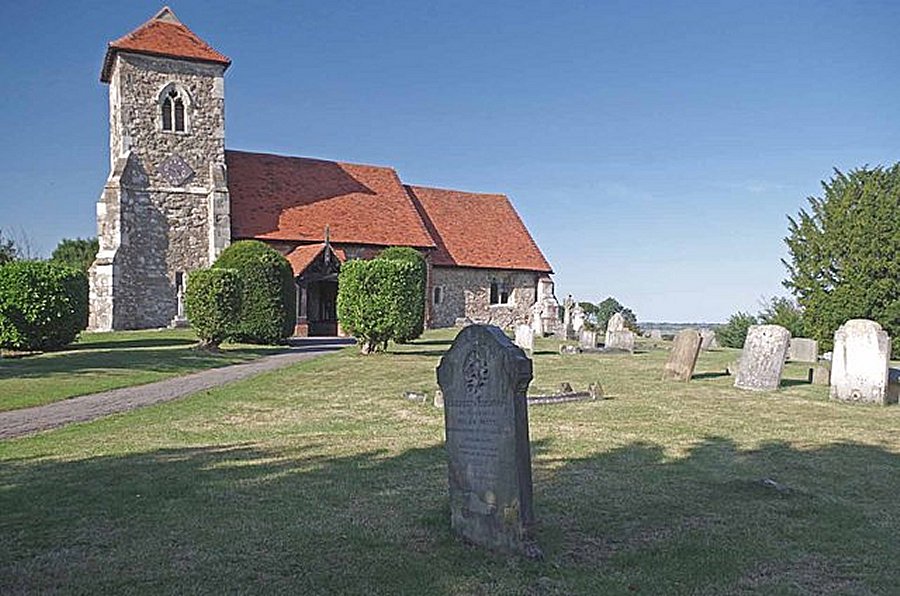 St Andrews Minster Ashingdon. There has been a church here since 1020. King Canute ordered its construction and attended the dedication. Much of the church was rebuilt in the Middle Ages. Image credit: © Copyright Glyn Baker and licensed for reuse under this Creative Commons Licence.
St Andrews Minster Ashingdon. There has been a church here since 1020. King Canute ordered its construction and attended the dedication. Much of the church was rebuilt in the Middle Ages. Image credit: © Copyright Glyn Baker and licensed for reuse under this Creative Commons Licence.
The church still stands to this day and is dedicated to Saint Andrew but is believed previously to have been dedicated to Saint Michael, who was considered a military saint: churches dedicated to him are frequently located on a hill.
Suppose Ashington was not the place of the battle. In that case, there is another possible location based on archaeological finds. Its location is Ashdon in the Essex area, where archaeologists unearthed Roman and Anglo-Saxon coins.
Written by – A. Sutherland - AncientPages.com Senior Staff Writer
Updated on January 21, 2024
Copyright © AncientPages.com All rights reserved. This material may not be published, broadcast, rewritten or redistributed in whole or part without the express written permission of AncientPages.com
Expand for referencesReferences:
More From Ancient Pages
-
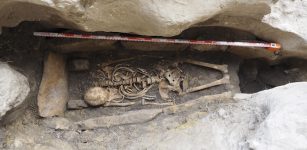 Hispano-Visigothic Grave At Ojo Guareña – Resting Place Of A Hermit Who Sought Isolation When The Moors Arrived?
Archaeology | Sep 17, 2021
Hispano-Visigothic Grave At Ojo Guareña – Resting Place Of A Hermit Who Sought Isolation When The Moors Arrived?
Archaeology | Sep 17, 2021 -
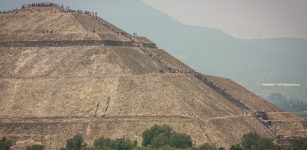 Urban Resiliency Lie Within Ancient Cities – New Study Suggests
Archaeology | Jul 25, 2023
Urban Resiliency Lie Within Ancient Cities – New Study Suggests
Archaeology | Jul 25, 2023 -
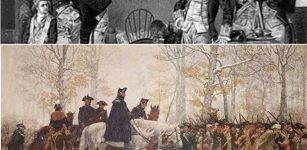 On This Day In History: American General Benedict Arnold Commits Treason – On Sep 21, 1780
News | Sep 21, 2015
On This Day In History: American General Benedict Arnold Commits Treason – On Sep 21, 1780
News | Sep 21, 2015 -
 Ancient Fossil Found In Sahara Suggests Loch Ness Monster Could Be Real
Archaeology | Jul 27, 2022
Ancient Fossil Found In Sahara Suggests Loch Ness Monster Could Be Real
Archaeology | Jul 27, 2022 -
 Stonehenge Is Older Than Mankind – Archaeologist Suggests
Archaeology | Apr 12, 2018
Stonehenge Is Older Than Mankind – Archaeologist Suggests
Archaeology | Apr 12, 2018 -
 Venus Cloacina: Roman Goddess Of Sewers And Drains
Featured Stories | Dec 19, 2019
Venus Cloacina: Roman Goddess Of Sewers And Drains
Featured Stories | Dec 19, 2019 -
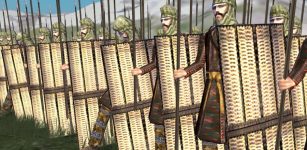 Who Were Persian ‘Sparabara’?
Featured Stories | Aug 28, 2017
Who Were Persian ‘Sparabara’?
Featured Stories | Aug 28, 2017 -
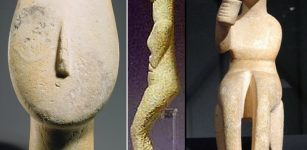 The Cyclades And Their Mysterious Society Lost In Time
Civilizations | Feb 4, 2016
The Cyclades And Their Mysterious Society Lost In Time
Civilizations | Feb 4, 2016 -
 Mayan Maize God And Ancient City Of El Mirador
Featured Stories | Apr 25, 2019
Mayan Maize God And Ancient City Of El Mirador
Featured Stories | Apr 25, 2019 -
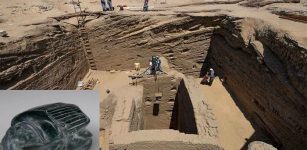 Unique Tomb Of Egyptian Commander Discovered In Abusir Sheds Light On ‘Globalisation’ In Ancient World
Archaeology | Jul 20, 2022
Unique Tomb Of Egyptian Commander Discovered In Abusir Sheds Light On ‘Globalisation’ In Ancient World
Archaeology | Jul 20, 2022 -
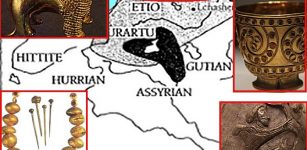 Trialeti Culture: Ancient Caucasian People Who Still Hold Their Secrets
Civilizations | Jul 8, 2017
Trialeti Culture: Ancient Caucasian People Who Still Hold Their Secrets
Civilizations | Jul 8, 2017 -
 Unknown Biological Entities And Disturbing Weather Phenomenon In Washington Still Baffle Scientists
Featured Stories | Jul 23, 2019
Unknown Biological Entities And Disturbing Weather Phenomenon In Washington Still Baffle Scientists
Featured Stories | Jul 23, 2019 -
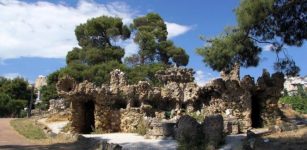 Mysterious And Magnificent Pasha Gardens Built For Unknown Reasons
Featured Stories | Oct 8, 2018
Mysterious And Magnificent Pasha Gardens Built For Unknown Reasons
Featured Stories | Oct 8, 2018 -
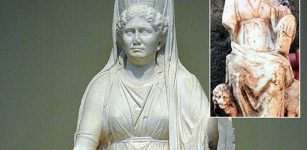 Marble 2th Century AD Statuette Of Goddess Cybele Unearthed In Bulgaria’s Plovdiv
Archaeology | Nov 5, 2019
Marble 2th Century AD Statuette Of Goddess Cybele Unearthed In Bulgaria’s Plovdiv
Archaeology | Nov 5, 2019 -
 Ancient Oil Lamp Shop Discovered In Aizanoi, The Second Ephesus
Archaeology | Nov 22, 2021
Ancient Oil Lamp Shop Discovered In Aizanoi, The Second Ephesus
Archaeology | Nov 22, 2021 -
 Mysterious 2,000-Year-Old Disco Colgante – Unknown High-Tech Device, Representation Of A Spiral Galaxy Or Something Else?
Artifacts | Nov 20, 2020
Mysterious 2,000-Year-Old Disco Colgante – Unknown High-Tech Device, Representation Of A Spiral Galaxy Or Something Else?
Artifacts | Nov 20, 2020 -
 Advent: Facts And History About The Christian Season Celebration
Christmas Traditions | Dec 1, 2024
Advent: Facts And History About The Christian Season Celebration
Christmas Traditions | Dec 1, 2024 -
 Ancient Artifacts With Foreign Inscriptions And Unknown Signs Discovered In The American Southwest Reveal An Epic Story
Featured Stories | Jul 11, 2024
Ancient Artifacts With Foreign Inscriptions And Unknown Signs Discovered In The American Southwest Reveal An Epic Story
Featured Stories | Jul 11, 2024 -
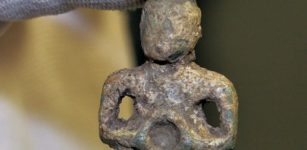 Rare 2000-Year-Old Celtic Figurine Among Finds In Cambridgeshire
Archaeology | Dec 18, 2018
Rare 2000-Year-Old Celtic Figurine Among Finds In Cambridgeshire
Archaeology | Dec 18, 2018 -
 Dragon Man: New Species Of Human May Replace Neanderthals As Our Closest Relative
Archaeology | Jun 26, 2021
Dragon Man: New Species Of Human May Replace Neanderthals As Our Closest Relative
Archaeology | Jun 26, 2021
